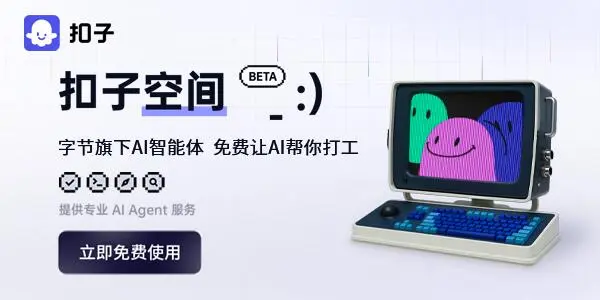字符串是Python中基本的数据类型,几乎在每个Python程序中都会使用到它。
1、Slicing
slicing切片,按照一定条件从列表或者元组中取出部分元素(比如特定范围、索引、分割值)
s = ' hello '
s = s[:]
print(s)
# hello
s = ' hello '
s = s[3:8]
print(s)
# hello2、strip()
strip()方法用于移除字符串头尾指定的字符(默认为空格或换行符)或字符序列。
s = ' hello '.strip()
print(s)
# hello
s = '###hello###'.strip()
print(s)
# ###hello###在使用strip()方法时,默认去除空格或换行符,所以#号并没有去除。
可以给strip()方法添加指定字符,如下所示。
s = '###hello###'.strip('#')
print(s)
# hello此外当指定内容不在头尾处时,并不会被去除。
s = ' \n \t hello\n'.strip('\n')
print(s)
#
# hello
s = '\n \t hello\n'.strip('\n')
print(s)
# hello第一个\n前有个空格,所以只会去取尾部的换行符。
最后strip()方法的参数是剥离其值的所有组合,这个可以看下面这个案例。
s = 'www.baidu.com'.strip('cmow.')
print(s)
# baidu最外层的首字符和尾字符参数值将从字符串中剥离。字符从前端移除,直到到达一个不包含在字符集中的字符串字符为止。
在尾部也会发生类似的动作。
3、lstrip()
移除字符串左侧指定的字符(默认为空格或换行符)或字符序列。
s = ' hello '.lstrip()
print(s)
# hello同样的,可以移除左侧所有包含在字符集中的字符串。
s = 'Arthur: three!'.lstrip('Arthur: ')
print(s)
# ee!4、rstrip()
移除字符串右侧指定的字符(默认为空格或换行符)或字符序列。
s = ' hello '.rstrip()
print(s)
# hello5、removeprefix()
Python3.9中移除前缀的函数。
# python 3.9
s = 'Arthur: three!'.removeprefix('Arthur: ')
print(s)
# three!和strip()相比,并不会把字符集中的字符串进行逐个匹配。
6、removesuffix()
Python3.9中移除后缀的函数。
s = 'HelloPython'.removesuffix('Python')
print(s)
# Hello7、replace()
把字符串中的内容替换成指定的内容。
s = 'string methods in python'.replace(' ', '-')
print(s)
# string-methods-in-python
s = 'string methods in python'.replace(' ', '')
print(s)
# stringmethodsinpython8、re.sub()
re是正则的表达式,sub是substitute表示替换。
re.sub则是相对复杂点的替换。
import re
s = "string methods in python"
s2 = s.replace(' ', '-')
print(s2)
# string----methods-in-python
s = "string methods in python"
s2 = re.sub("\s+", "-", s)
print(s2)
# string-methods-in-python和replace()做对比,使用re.sub()进行替换操作,确实更高级点。
9、split()
对字符串做分隔处理,最终的结果是一个列表。
s = 'string methods in python'.split()
print(s)
# ['string', 'methods', 'in', 'python']当不指定分隔符时,默认按空格分隔。
s = 'string methods in python'.split(',')
print(s)
# ['string methods in python']此外,还可以指定字符串的分隔次数。
s = 'string methods in python'.split(' ', maxsplit=1)
print(s)
# ['string', 'methods in python']10、rsplit()
从右侧开始对字符串进行分隔。
s = 'string methods in python'.rsplit(' ', maxsplit=1)
print(s)
# ['string methods in', 'python']11、join()
string.join(seq)。以string作为分隔符,将seq中所有的元素(的字符串表示)合并为一个新的字符串。
list_of_strings = ['string', 'methods', 'in', 'python']
s = '-'.join(list_of_strings)
print(s)
# string-methods-in-python
list_of_strings = ['string', 'methods', 'in', 'python']
s = ' '.join(list_of_strings)
print(s)
# string methods in python12、upper()
将字符串中的字母,全部转换为大写。
s = 'simple is better than complex'.upper()
print(s)
# SIMPLE IS BETTER THAN COMPLEX13、lower()
将字符串中的字母,全部转换为小写。
s = 'SIMPLE IS BETTER THAN COMPLEX'.lower()
print(s)
# simple is better than complex14、capitalize()
将字符串中的首个字母转换为大写。
s = 'simple is better than complex'.capitalize()
print(s)
# Simple is better than complex15、islower()
判断字符串中的所有字母是否都为小写,是则返回True,否则返回False。
print('SIMPLE IS BETTER THAN COMPLEX'.islower()) # False
print('simple is better than complex'.islower()) # True16、isupper()
判断字符串中的所有字母是否都为大写,是则返回True,否则返回False。
print('SIMPLE IS BETTER THAN COMPLEX'.isupper()) # True
print('SIMPLE IS BETTER THAN complex'.isupper()) # False17、isalpha()
如果字符串至少有一个字符并且所有字符都是字母,则返回 True,否则返回 False。
s = 'python'
print(s.isalpha())
# True
s = '123'
print(s.isalpha())
# False
s = 'python123'
print(s.isalpha())
# False
s = 'python-123'
print(s.isalpha())
# False18、isnumeric()
如果字符串中只包含数字字符,则返回 True,否则返回 False。
s = 'python'
print(s.isnumeric())
# False
s = '123'
print(s.isnumeric())
# True
s = 'python123'
print(s.isnumeric())
# False
s = 'python-123'
print(s.isnumeric())
# False19、isalnum()
如果字符串中至少有一个字符并且所有字符都是字母或数字,则返回True,否则返回 False。
s = 'python'
print(s.isalnum())
# True
s = '123'
print(s.isalnum())
# True
s = 'python123'
print(s.isalnum())
# True
s = 'python-123'
print(s.isalnum())
# False20、count()
返回指定内容在字符串中出现的次数。
n = 'hello world'.count('o')
print(n)
# 2
n = 'hello world'.count('oo')
print(n)
# 021、find()
检测指定内容是否包含在字符串中,如果是返回开始的索引值,否则返回-1。
s = 'Machine Learning'
idx = s.find('a')
print(idx)
print(s[idx:])
# 1
# achine Learning
s = 'Machine Learning'
idx = s.find('aa')
print(idx)
print(s[idx:])
# -1
# g此外,还可以指定开始的范围。
s = 'Machine Learning'
idx = s.find('a', 2)
print(idx)
print(s[idx:])
# 10
# arning22、rfind()
类似于find()函数,返回字符串最后一次出现的位置,如果没有匹配项则返回 -1。
s = 'Machine Learning'
idx = s.rfind('a')
print(idx)
print(s[idx:])
# 10
# arning23、startswith()
检查字符串是否是以指定内容开头,是则返回 True,否则返回 False。
print('Patrick'.startswith('P'))
# True24、endswith()
检查字符串是否是以指定内容结束,是则返回 True,否则返回 False。
print('Patrick'.endswith('ck'))
# True25、partition()
string.partition(str),有点像find()和split()的结合体。
从str出现的第一个位置起,把字符串string分成一个3 元素的元组(string_pre_str,str,string_post_str),如果string中不包含str则 string_pre_str==string。
s = 'Python is awesome!'
parts = s.partition('is')
print(parts)
# ('Python ', 'is', ' awesome!')
s = 'Python is awesome!'
parts = s.partition('was')
print(parts)
# ('Python is awesome!', '', '')26、center()
返回一个原字符串居中,并使用空格填充至长度width的新字符串。
s = 'Python is awesome!'
s = s.center(30, '-')
print(s)
# ------Python is awesome!------27、ljust()
返回一个原字符串左对齐,并使用空格填充至长度width的新字符串。
s = 'Python is awesome!'
s = s.ljust(30, '-')
print(s)
# Python is awesome!------------28、rjust()
返回一个原字符串右对齐,并使用空格填充至长度width的新字符串。
s = 'Python is awesome!'
s = s.rjust(30, '-')
print(s)
# ------------Python is awesome!29、f-Strings
f-string是格式化字符串的新语法。
与其他格式化方式相比,它们不仅更易读,更简洁,不易出错,而且速度更快!
num = 1
language = 'Python'
s = f'{language} is the number {num} in programming!'
print(s)
# Python is the number 1 in programming!
num = 1
language = 'Python'
s = f'{language} is the number {num*8} in programming!'
print(s)
# Python is the number 8 in programming!30、swapcase()
翻转字符串中的字母大小写。
s = 'HELLO world'
s = s.swapcase()
print(s)
# hello WORLD31、zfill()
string.zfill(width)。
返回长度为width的字符串,原字符串string右对齐,前面填充0。
s = '42'.zfill(5)
print(s)
# 00042
s = '-42'.zfill(5)
print(s)
# -0042
s = '+42'.zfill(5)
print(s)
# +0042本文内容仅供个人学习/研究/参考使用,不构成任何决策建议或专业指导。分享/转载时请标明原文来源,同时请勿将内容用于商业售卖、虚假宣传等非学习用途哦~感谢您的理解与支持!
9 个用于前端开发的Python 框架:JavaScript 替代品
JavaScript 是 Web 开发领域里非常重要的技术之一,并且是每个开发者都必须掌握的技能。而我作为一个开始使用 Python 编程的人
30个非常实用的Python技巧
Python 是机器学习最广泛采用的编程语言,它最重要的优势在于编程的易用性。如果读者对基本的 Python 语法已经有一些了解,那么这篇文章可能会给你一些启发。作者简单概览了 30 段代码,它们都是平常非常实用的技巧
25个超有用的Python代码段
Python是一种通用的高级编程语言。用它可以做许多事,比如开发桌面 GUI 应用程序、网站和 Web 应用程序等。作为一种高级编程语言,Python 还可以让你通过处理常见的编程任务来专注应用程序的核心功能。
如何选择异步Web Python框架
Python在3.4引入了 asyncio 库,3.6新增了关键字 async 和 await ,此后,异步框架迅速发展了起来,性能上能和Node.js比肩,除非是CPU密集型任务,否则没有理由不适用异步框架
11 个优秀的 Python 编译器和解释器
Python 是一门对初学者友好的编程语言,是一种多用途的、解释性的和面向对象的高级语言。它拥有非常小的程序集,非常易于学习、阅读和维护。其解释器可在Windows、Linux 和 Mac OS 等多种操作系统上使用
写 Python 代码不可不知的函数式编程技术
在 Python 中,函数是「头等公民」(first-class)。也就是说,函数与其他数据类型(如 int)处于平等地位。因而,我们可以将函数赋值给变量,也可以将其作为参数传入其他函数
Python 中 3 个不可思议的返回
Python 字典通过检查键值是否相等和比较哈希值来确定两个键是否相同.具有相同值的不可变对象在Python中始终具有相同的哈希值.注意: 具有不同值的对象也可能具有相同的哈希值(哈希冲突)
Python 实现单例模式
而且上面这种方法只有第一次 get_instance() 的时候能给对象传递参数,总之有许多弊端。Python 提供了 __new__ 方法正好完美解决了这个问题,再加上锁,就能实现一个线程安全的单例模式:

常见Python的Web开发框架
web开发框架存在的意义就在于可以快速便捷的构建应用,而不用去在意那些没必要的技术细节,到2020年为止,基于Python创建的的web应用已经非常多了,国外知名的有youtube.com、instagram、reditt、国内有知乎、豆瓣等等
nodejs中怎么调用python函数?
每种语言都有自己的优势,互相结合起来各取所长程序执行起来效率更高或者说哪种实现方式较简单就用哪个,nodejs是利用子进程来调用系统命令或者文件,NodeJS子进程提供了与系统交互的重要接口,其主要API有: 标准输入
内容以共享、参考、研究为目的,不存在任何商业目的。其版权属原作者所有,如有侵权或违规,请与小编联系!情况属实本人将予以删除!




